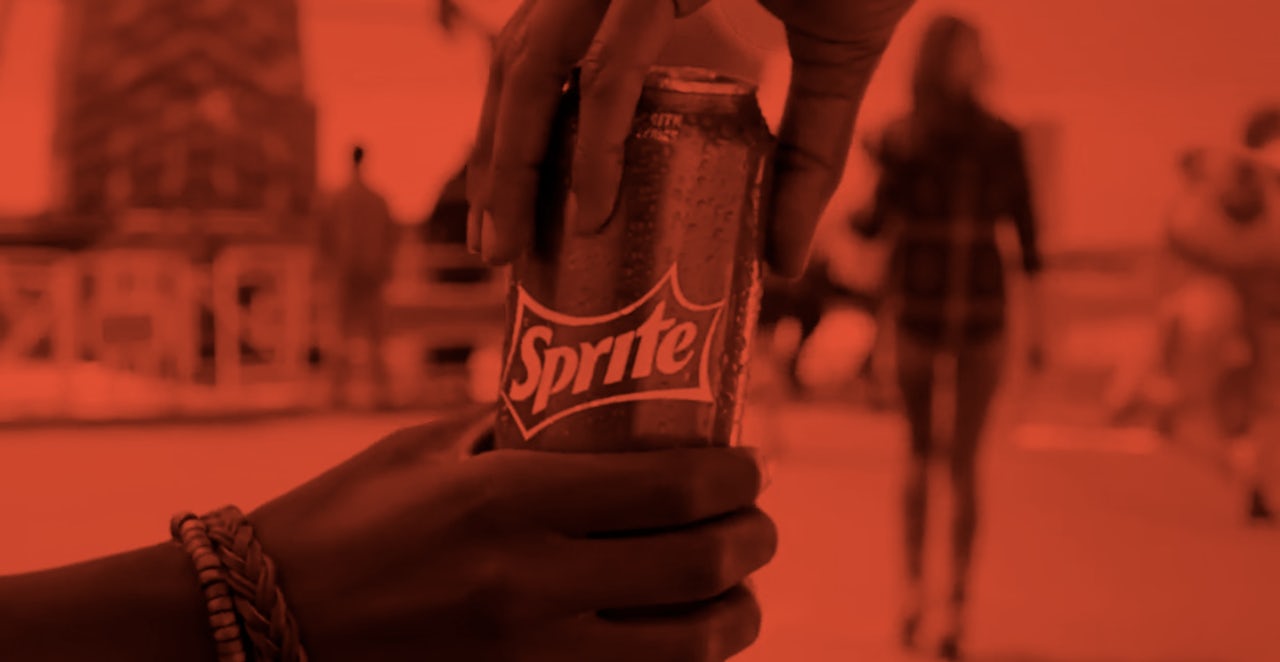When I’m faced with the choice of beverage at a fast food soda dispenser, I always go for the lemon-lime option, and my No. 1 pick is always Sprite. Is it because I just enjoy the taste? Perhaps. Is it because of some long-forgotten joyful association with it from my youth? Maybe. Or is it because the company has poured millions of dollars into making sure that I, an African-American hip-hop and basketball fan, would give it my brand loyalty? Perhaps, maybe, possibly — who can say?
It’s a sinister thought to entertain, as an ideally thoughtful consumer — that decades of targeted advertising could actually sway something as personal as what beverage I like to drink. Considering the history behind the soda, it checks out. Following Sprite’s debut in 1961, its advertising primarily focused on the soda’s appeal as a mixer for alcohol like vodka and gin. But in an attempt to up its “cool” factor and appeal to minority and youth markets, in the ‘80s the soda company began a relationship with hip-hop that has come to characterize it as a brand today — the unofficial “black people soda,” even if no executive would admit it.
In his 2012 book The Tanning of America, marketing expert Steve Stoute explored Sprite’s marketing history. “Sprite perceived the potential marketability of the cool emanating from hip-hop culture around the same time that Adidas made a deal with Run DMC,” Stoute wrote. One of Sprite’s first ventures into the “urban” market was a 1986 commercial featuring hip-hop artist Kurtis Blow rapping about the soda in a recording booth. “Without lymon it’s not happenin’ so sorry 7-Up,” he says at one point, using Sprite’s made-up word describing its flavor profile to call out its main competitor.
Sprite’s non-celebrity commercials took on a new look too. The late ‘80s “I like the Sprite in you” was a standard jingle-driven campaign featuring young people, but by 1991, it had incorporated a jingle with a more hip-hop-inspired sound and more appearances of black actors. In 1990, Heavy D and the Boyz and Kid-N-Play followed in Blow’s footsteps with Sprite commercials of their own as part of the “I like the Sprite in you” campaign. Soon, the company would transition to its heavily youth and urban market-focused Obey Your Thirst campaign in 1994.
By the year 2000, R&B group Hi-Five; Kriss Kross; KRS-One, MC Shan, and Kid Capri; Grand Puba and Large Professor; Pete Rock and CL Smooth; Goodie Mob, Fat Joe, Common, Mac 10 and Afrika Bambaataa; A Tribe Called Quest; Nas and AZ; The Lost Boyz; Eve, Angie Martinez, Mia X, Amil, Roxanne Shante, and Kool Keith; and Missy Elliott had all done commercials for Sprite. (Not to mention black basketball players Kobe Bryant, Grant Hill, and Tim Duncan.) From using mega-celebrities like Elliott to rap history icons like Shante and MC Shan, Sprite established itself as the soda of rap fans with an impressive artist roster that predated hip-hop’s ascendence to pop culture mainstay.
The targeting proved successful. According to The Advertising Age Encyclopedia of Advertising, “in 1990 Sprite was a minor product in a competitive soft drink marketplace.” In 2000, Sprite was the No. 5 top-selling U.S. brand and had 58 percent market share in the lemon-lime soda category.
That legacy of celebrity sponsorship nicely paved the way for Sprite’s important music industry collaborations in the new millennium. According to How Cool Brands Stay Hot: Branding to Generations Y and Z, Sprite experienced lagging growth for some time in the early 2000s. In 2010, it brought out the big guns by enlisting superstar Drake in a memorable commercial that featured his head splitting open like a sophisticated robot. In 2012, the company began its continuing partnership with BET, sponsoring the channel’s annual hip-hop Awards and BET Experience music festival celebrity basketball games. In 2015, the company partnered with The FADER to create short branded documentaries about Drake, Nas, Vince Staples, and Isaiah Rashad. And of course, the company continued featuring other hip-hop artists and African-American icons, including Lil Yachty and LeBron James. All these partnerships effectively deepened the soda’s ties to black communities while positioning it ever closer to hip-hop’s sites of production, promotion, and legacy.
Today, Sprite still has a number of hip-hop artists in its roster, the most visible being Vince Staples, whose breakout single “Norf, Norf” begins with the line “Bitch you thirsty, please grab a Sprite.” (He’d engaged in a long-running gag about promoting Sprite, but then it actually happened.) He, along with fellow sponsees Kamaiyah, DRAM, Lil Yachty, Vic Mensa, and Kap G, all got their own limited-edition Sprite cans featuring snippets of lyrics from their respective songs. This was the latest iteration of a hip-hop lyrics can campaign it began in 2015. And a search of lyrics on Genius.com shows that even hip-hop artists without sponsorships are all too ready to name-drop the product, partially because of its newfound association with lean.
Looking back, Sprite’s enlisting Kurtis Blow in 1986 was the beginning of the smartest pivot the company could have made, helping to blaze the trail of hip-hop-focused advertising so many companies engage in today. So while people of all ages and races probably drink Sprite, if you’re a black hip-hop fan you can be sure the company has been thinking specifically about you.
